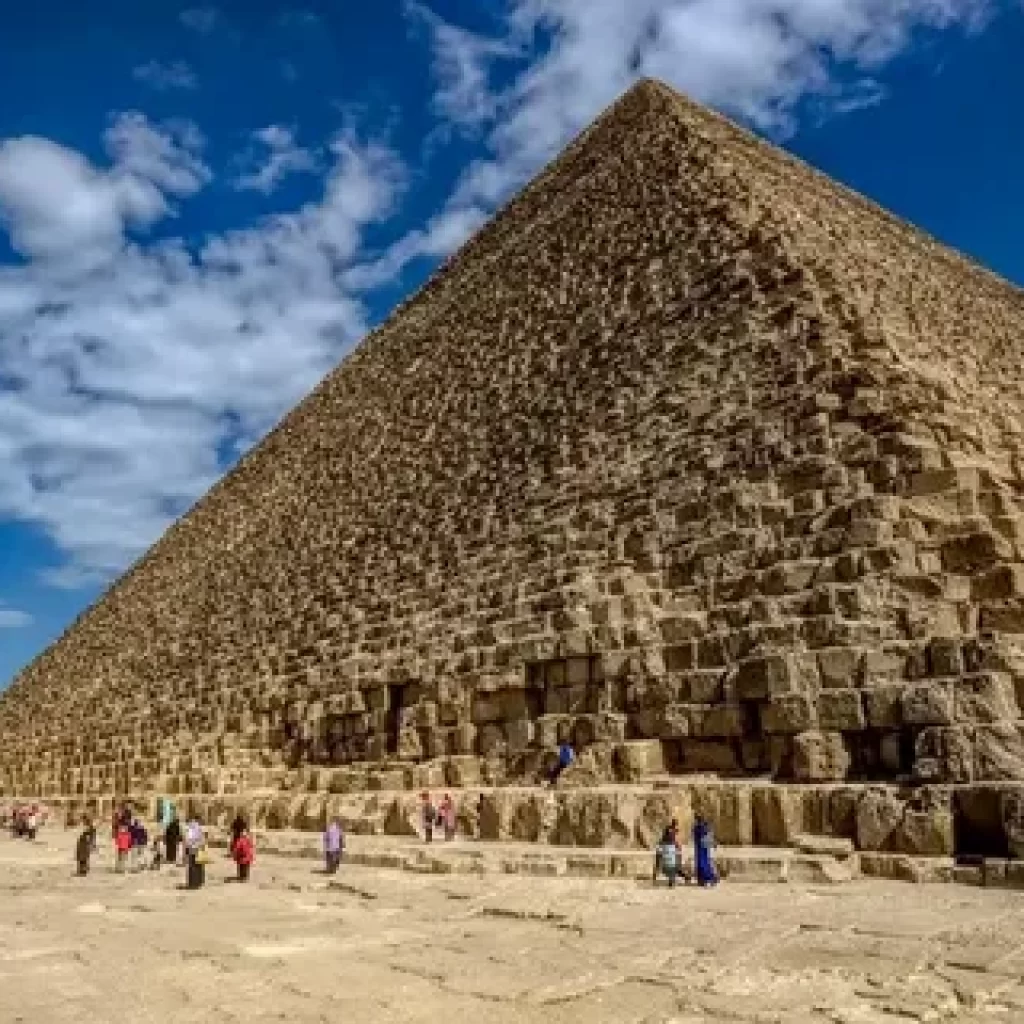Unveiling The Biggest Pyramid of Egypt
Table of Contents
- Introduction
- Historical Background
- Architectural Wonders
- The Construction Process
- Key Discoveries
- The Pyramid’s Significance
- Modern-day Exploration
- Preservation Efforts
- Tourist Experience
- Future Prospects
1. Introduction
The Biggest Pyramid of Egypt, called the Great Pyramid of Giza, remains a lasting symbol of ancient Egyptian civilization. Erected over 4,500 years ago, this colossal structure has intrigued historians, archaeologists, and tourists alike. Its massive scale and architectural complexity make it a marvel of ancient engineering and a testament to The Biggest Pyramid of Egypt.

2. Historical Background
The Biggest Pyramid of Egypt, the biggest among the three on theGiza Plateau, was constructed during the Fourth Dynasty of the Old Kingdom.. Commissioned by Pharaoh Khufu, also known as Cheops, it was intended as a tomb for the king. This pyramid, originally standing at 146.6 meters (481 feet), was the tallest man-made structure in the world for over 3,800 years.
3. Architectural Wonders
The design of The Biggest Pyramid of Egypt, reflects an advanced understanding of geometry and astronomy. Constructed with approximately 2.3 million blocks of limestone and granite, each weighing between 2.5 and 15 tons, the pyramid’s precision and alignment with the cardinal points showcase the Egyptians’ sophisticated construction techniques. The use of a square base and precise measurements helped it to endure through millennia.

4. The Construction Process
The construction of The Biggest Pyramid of Egypt, remains a topic of debate among scholars. Theories suggest that ramps, levers, and pulleys were used to move and place the massive stones. Some propose the use of a straight or circular ramp, while others believe in the use of a combination of methods. Despite extensive research, the exact techniques used are still not definitively known.
5. Key Discoveries
Over the centuries, numerous discoveries have been made related toThe Biggest Pyramid of Egypt. In 2017, the Scan Pyramids project revealed previously unknown voids within the pyramid using non-invasive scanning techniques. These findings have opened new avenues for research and understanding of the pyramid’s construction and purpose.

6. The Pyramid’s Significance
The Great Pyramid of Giza is not only a burial site but also a symbol of ancient Egyptian religious and cultural beliefs. It was constructed with precise alignment to the stars, reflecting the Egyptians’ cosmological views. The pyramid’s dimensions and its alignment with the stars are believed to have had religious significance, guiding the soul of the Pharaoh in the afterlife.
7. Modern-day Exploration
Today, the Great Pyramid continues to be a focal point of exploration and study. Researchers and tourists from around the world visit the site to witness its grandeur and to explore its mysteries. Modern technologies, such as 3D modeling and advanced imaging, are employed to uncover more about its construction and history.

8. Preservation Efforts
Preserving the Great Pyramid is crucial due to its historical and cultural value. Efforts are continually made to protect the structure from environmental damage and vandalism. Conservation projects focus on maintaining the pyramid’s integrity while managing the impact of tourism and natural wear and tear.
9. Tourist Experience
Visiting the Great Pyramid offers a unique experience for tourists. The site provides opportunities to explore the pyramid’s exterior, visit the nearby Sphinx, and learn about ancient Egyptian history through informative displays and guided tours. The grandeur of the pyramid, coupled with its historical significance, makes it a must-visit destination for history enthusiasts.

10. Future Prospects
Looking ahead, ongoing research and technological advancements are expected to provide deeper insights into the Great Pyramid’s construction and purpose. Efforts to integrate preservation with tourism will continue to ensure that future generations can appreciate this monumental achievement. The pyramid’s enduring legacy will likely continue to captivate and inspire people around the world.
Conclusion
The Biggest Pyramid of Egypt, as the Biggest Pyramid of Egypt, remains one of the most remarkable achievements of ancient engineering. Its historical significance, architectural brilliance, and ongoing mysteries ensure its place as a centerpiece of Egyptian heritage. As research progresses and preservation efforts continue, this iconic The Biggest Pyramid of Egypt, structure will continue to fascinate and inspire for generations to come.

FAQs
- What constitutes the Great Pyramid of Giza?
- The Great Pyramid of Giza is the largest pyramid in Egypt, built for Pharaoh Khufu during the Fourth Dynasty.
2.What was the initial height of the Great Pyramid?
- Originally, it stood at 146.6 meters (481 feet) but now measures about 138.8 meters (455 feet) due to erosion.
3.How many blocks were used in its construction?
- Approximately 2.3 million blocks of limestone and granite were used.
4.Why did they construct the Great Pyramid?
- It was constructed as a tomb for Pharaoh Khufu and a symbol of his divine power.
5.What are some theories about its construction?
- Theories include the use of ramps, levers, and pulleys, but the exact methods remain uncertain.
6.What new discoveries have surfaced?
- The ScanPyramids project revealed previously unknown voids within the pyramid.
7.How is the Great Pyramid preserved?
- Preservation efforts include managing environmental damage, controlling tourism, and ongoing conservation projects.





Comment (0)